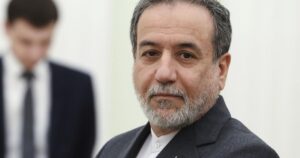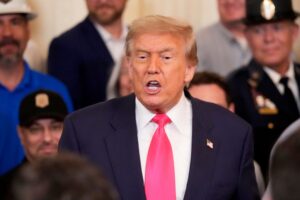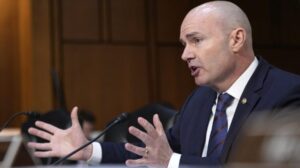The Dictatorship
Cities brace for large crowds at anti-Trump ‘No Kings’ demonstrations across USA… Developing…
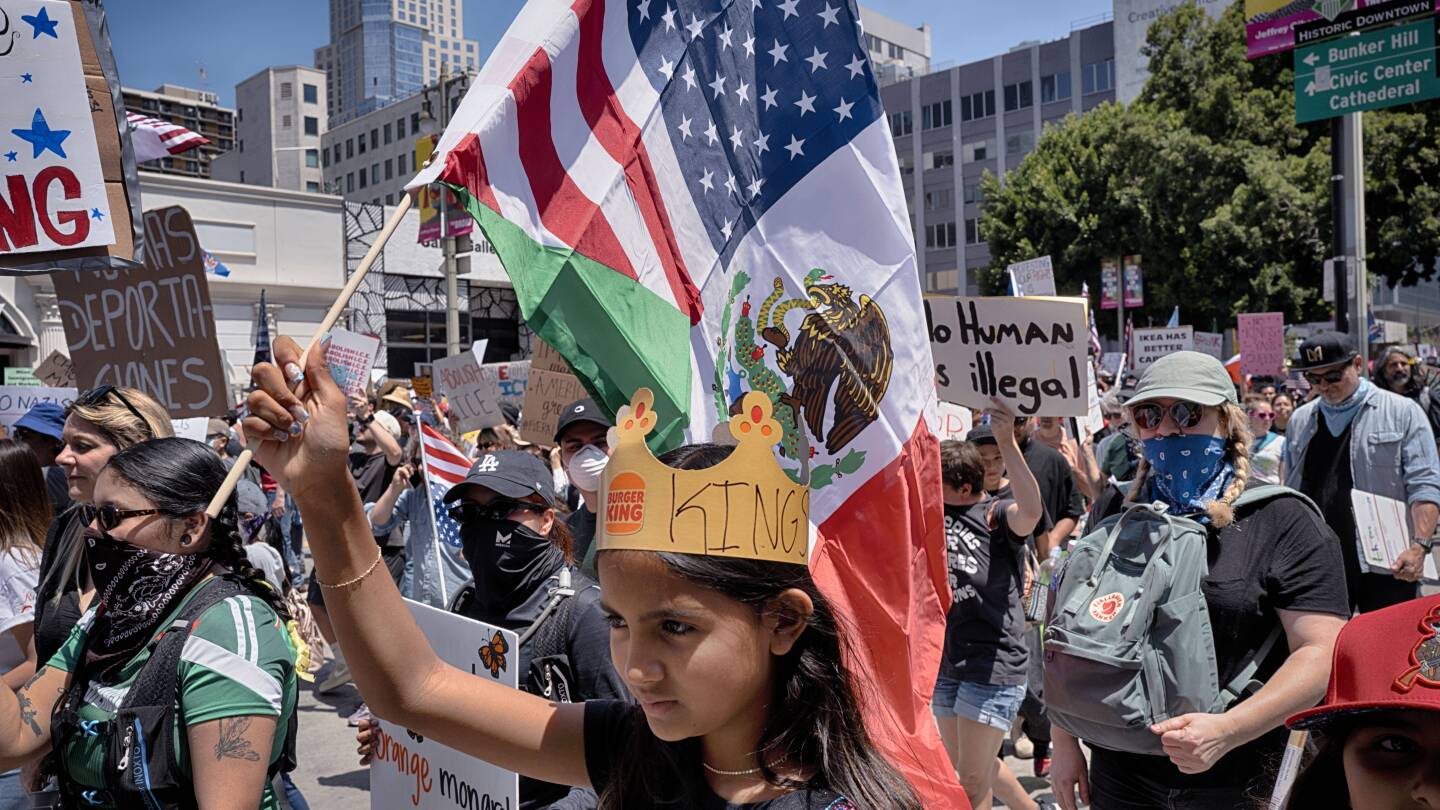
PHILADELPHIA (AP) — Masses of demonstrators packed into streets, parks and plazas across the United States on Saturday to protest President Donald Trumpmarching through downtowns and small towns, blaring anti-authoritarian chants mixed with support for protecting democracy and immigrant rights.
Organizers of the “No Kings” demonstrations said millions had marched in hundreds of events. Governors across the U.S. had urged calm and vowed no tolerance for violence, while some mobilized the National Guard ahead of marchers gathering.
Demonstrators standoff against law enforcement on horseback during a protest Saturday, June 14, 2025, in Los Angeles. (AP Photo/Ethan Swope)
Demonstrators standoff against law enforcement on horseback during a protest Saturday, June 14, 2025, in Los Angeles. (AP Photo/Ethan Swope)
Confrontations were isolated. But police in Los Angeles, where protests over federal immigration enforcement raids erupted a week earlier and sparked demonstrations across the country, used tear gas and crowd-control munitions to clear out protesters after the formal event ended. Officers in Portland also fired tear gas and projectiles to disperse a crowd that protested in front of a U.S. Immigration and Customs Enforcement building well into the evening.
And in Salt Lake City, Utah, police were investigating a shooting during a march downtown that left one person critically injured. Three people were taken into custody, including a man believed to be the shooter, who also suffered a gunshot wound, according to Police Chief Brian Redd.
Redd said it was too early to tell if the shooting was politically motivated and whether those involved knew each other. The shooter appeared to be walking alongside the group of thousands who were marching, he added. Video feeds showed demonstrators running for safety as gunshots rang out.
Huge, boisterous crowds marched, danced, drummed, and chanted shoulder-to-shoulder in New York, Denver, Chicago, Austin and Los Angeles, some behind “no kings” banners. Atlanta’s 5,000-capacity event quickly reached its limit, with thousands more gathered outside barriers to hear speakers in front of the state Capitol. Officials in Seattle estimated that more than 70,000 people attended the city’s largest rally downtown, the Seattle Times reported.
Demonstrators dressed in Revolutionary War era clothing march down Benjamin Franklin Parkway during the “No Kings” protest, Saturday, June 14, 2025, in Philadelphia. (AP Photo/Yuki Iwamura)
Demonstrators dressed in Revolutionary War era clothing march down Benjamin Franklin Parkway during the “No Kings” protest, Saturday, June 14, 2025, in Philadelphia. (AP Photo/Yuki Iwamura)
Trump was in Washington for a military parade marking the Army’s 250th anniversary that coincides with the president’s birthday. About 200 protesters assembled in northwest Washington’s Logan Circle and chanted “Trump must go now” before erupting in cheers. A larger-than-life puppet of Trump — a caricature of the president wearing a crown and sitting on a golden toilet — was wheeled through the crowd.
In some places, organizers handed out little American flags while others flew their flags upside down, a sign of distress. Mexican flagswhich have become a fixture of the Los Angeles protests against immigration raids, also made an appearance at some demonstrations Saturday.
In Culpepper, Virginia, police said one person was struck by an SUV when a 21-year-old driver intentionally accelerated his SUV into the crowd as protesters were leaving a rally. The driver was charged with reckless driving.
The demonstrations come on the heels of the protests over the federal immigration enforcement raids that began last week and Trump ordering the National Guard and Marines to Los Angeles, where protesters blocked a freeway and set cars on fire.
“Today, across red states and blue, rural towns and major cities, Americans stood in peaceful unity and made it clear: we don’t do kings,” the No Kings Coalition said in a statement Saturday afternoon after many events had ended.
Philadelphia
Demonstrators march during the “No Kings” protest, Saturday, June 14, 2025, in Philadelphia. (AP Photo/Yuki Iwamura)
Demonstrators march during the “No Kings” protest, Saturday, June 14, 2025, in Philadelphia. (AP Photo/Yuki Iwamura)
Thousands gathered downtown, where organizers handed out small American flags and people carried protest signs saying “fight oligarchy” and “deport the mini-Mussolinis.”
Karen Van Trieste, a 61-year-old nurse who drove up from Maryland, said she grew up in Philadelphia and wanted to be with a large group of people showing her support.
“I just feel like we need to defend our democracy,” she said. She is concerned about the Trump administration’s layoffs of staff at the U.S. Centers for Disease Control and Prevention, the fate of immigrant communities and Trump trying to rule by executive order, she said.
A woman wearing a foam Statue of Liberty crown brought a speaker system and led an anti-Trump sing-along, changing the words “young man” in the song “Y.M.C.A.” to “con man.”
”I am what the successful American dream looks like,” said C.C. Téllez, an immigrant from Bolivia who attended the protest. “I’ve enjoyed great success here in the United States, and I’ve also contributed heavily to my community. And if there was space for me, I think there’s a way for everybody else to belong here as well.”
Los Angeles
Thousands gathered in front of City Hall, waving signs and listening to a Native American drum circle before marching through the streets.
As protesters passed National Guard troops or U.S. Marines stationed at various buildings, most interactions were friendly, with demonstrators giving fist bumps or posing for selfies. But others chanted “shame” or “go home” at the troops.
A law enforcement officer fires a less-lethal projectile during a protest Saturday, June 14, 2025, in Los Angeles. (AP Photo/Noah Berger)
A law enforcement officer fires a less-lethal projectile during a protest Saturday, June 14, 2025, in Los Angeles. (AP Photo/Noah Berger)
Amid signs reading “They fear us don’t back down California” and “We carry dreams not danger, ” one demonstrator carried a 2-foot-tall (60-centimeter) Trump pinata on a stick, with a crown on his head and sombrero hanging off his back. Another hoisted a huge helium-filled orange baby balloon with blond hair styled like Trump’s.
A few blocks from City Hall, protesters gathered in front of the downtown federal detention center being guarded by a line of Marines and other law enforcement. It was the first ti me that the Marines, in combat gear and holding rifles, have appeared at a demonstration since they were deployed to city on Friday with the stated mission of defending federal property.
Peter Varadi, 54, said he voted for Trump last November for “economic reasons.” Now, for the first time in his life, he is protesting, waving a Mexican and U.S. combined flag.
“I voted for Donald Trump, and now I regret that, because he’s taken this fascism to a new level,” Varadi said. “It’s Latinos now. Who’s next? It’s gays. Blacks after that. They’re coming for everybody.”
Even after the formal event ended, the downtown streets were packed with a jubilant crowd as people danced to salsa music and snacked on hot dogs and ice cream bought from vendors, many of whom are Latino immigrants. But the previously calm demonstration turned confrontational as police on horseback moved into the crowd and struck some people with wood rods and batons as they cleared the street in front of the federal building.
New York City
Marchers in the crowd that stretched for blocks along Fifth Avenue had diverse reasons for coming, including anger over Trump’s immigration policies, support for the Palestinian people and outrage over what they said was an erosion of free speech rights.
But there were patriotic symbols, too. Leah Griswold, 32, and Amber Laree, 59, who marched in suffragette white dresses, brought 250 American flags to hand out to people in the crowd.
“Our mothers who came out, fought for our rights, and now we’re fighting for future generations as well,” Griswold said.
Some protesters held signs denouncing Trump while others banged drums.
“We’re here because we’re worried about the existential crisis of this country and the planet and our species,” said Sean Kryston, 28.
Minnesota
Gov. Tim Walz and law enforcement encouraged people not to attend rallies “out of an abundance of caution” following the shootings of the Democratic state lawmakers.
Dozens of events were canceled, but tens of thousands still turned out for demonstrations in Duluth, Rochester and St. Paul, which included a march to the state Capitol. Walz canceled his scheduled appearance at the St. Paul event.
Authorities said the suspect had “No Kings” flyers in his car and writings mentioning the names of the victims as well as other lawmakers and officials, though they could not say if he had any other specific targets.
Seda Heng, 29, of Rochester, said she was heartbroken by the shootings, but still wanted to join the rally there. “These people are trying to do what they can for their communities, for the state, for the nation,” Heng told the Minnesota Star-Tribune.
North Carolina
Crowds cheered anti-Trump speakers in Charlotte’s First Ward Park before marching, chanting “No kings. No crowns. We will not bow down.”
Marchers stretched for blocks, led by a group of people holding a giant Mexican flag and bystanders cheering and clapping along the way.
Jocelyn Abarca, a 21-year-old college student, said the protest was a chance to “speak for what’s right” after mass deportations and Trump’s deployment of the National Guard in Los Angeles.
“If we don’t stop it now, it’s just going to keep getting worse,” she said.
A demonstrator holds a sign during a “No Kings” protest, Saturday, June 14, 2025, in Atlanta. (AP Photo/Mike Stewart)
A demonstrator holds a sign during a “No Kings” protest, Saturday, June 14, 2025, in Atlanta. (AP Photo/Mike Stewart)
Naomi Mena said she traveled an hour to demonstrate in Charlotte to represent her “friends and family who sadly can’t have a voice out in public now” to stay safe.
Texas
A rally at the Texas Capitol in Austin went off as planned despite state police briefly shutting down the building and the surrounding grounds after authorities said they received a “credible threat” to Democratic state lawmakers who were to attend.
Dozens of state troopers swarmed through the grounds about four hours before the event, but the area was later opened and the rally started on time. The building remained closed.
The Department of Public Safety later said one person was taken into custody “in connection with the threats made against state lawmakers” after a traffic stop in La Grange, Texas, about 65 miles (105 kilometers) east of Austin. State police did not detail the threat or immediately identify the person, but said there was no additional active threat.
Mississippi
A demonstration of hundreds of people opened to “War Pigs” by Black Sabbath playing over a sound system on the state Capitol lawn in Jackson.
“A lot of stuff that’s going on now is targeting people of color, and to see so many folks out here that aren’t black or brown fighting for the same causes that I’m here for, it makes me very emotional,” said Tony Cropper, who traveled from Tennessee to attend the protest.
Some people wore tinfoil crowns atop their heads. Others held signs inviting motorists to “Honk if you never text war plans.”
Melissa Johnson said she drove an hour-and-a-half to Jackson to protest because “we are losing the thread of democracy in our country.”
Portland
Earlier in the day, thousands of protesters lined the streets in downtown Portland for several blocks, waving signs as passing cars honked in support. They marched around the city draped in American flags to the beat of drums and music.
By late afternoon, a small group of demonstrators amassed across the river to protest in front of an ICE office where three people were arrested Wednesday night after starting a small fire against the building, police said.
U.S. Customs and Border Protection agents detain a man outside the U.S. Immigration and Customs building during a protest Saturday, June 14, 2025, in Portland, Ore. (AP Photo/Jenny Kane)
U.S. Customs and Border Protection agents detain a man outside the U.S. Immigration and Customs building during a protest Saturday, June 14, 2025, in Portland, Ore. (AP Photo/Jenny Kane)
Federal immigration officers fired tear gas, flash bangs and rubber bullets in an effort to clear out the remaining protesters in the evening. Some protesters threw water bottles back and tended to each other’s wounds. The police department wrote on X that the event was declared a riot.
At least two people were detained and taken inside the federal immigration building.
___
Associated Press journalists across the country contributed to this report.
The Dictatorship
Trump says Iran must open itself to inspection to verify it doesn’t restart its nuclear program
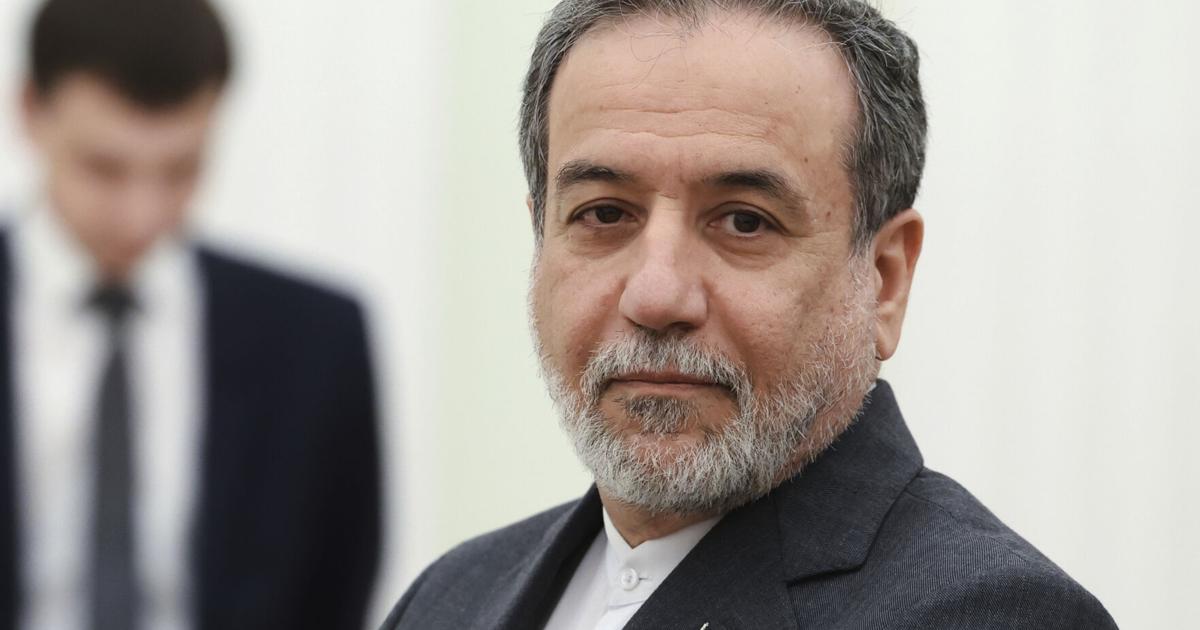
DUBAI, United Arab Emirates (AP) — U.S. President Donald Trump said on Friday that he expects Iran to open itself to international inspection to verify that it doesn’t restart its nuclear program.
Asked during a White House news conference if he would demand during expected talks with Iran that the International Atomic Energy Agency, the U.N. nuclear watchdog, or some other organization be authorized to conduct inspections, Trump responded that the Islamic Republic would have to cooperate with the group “or somebody that we respect, including ourselves.”
Earlier, Iran’s top diplomat said that the possibility of new negotiations with the United States on his country’s nuclear program has been “complicated” by the American attack on three of the sites, which he conceded caused “serious damage.”
The U.S. was one of the parties to the 2015 nuclear deal in which Iran agreed to limits on its uranium enrichment program in exchange for sanctions relief and other benefits.
Nuclear talks
That deal unraveled after Trump unilaterally pulled out the U.S. during his first term. Trump has suggested he’s interested in new talks with Iran and said the two sides would meet next week.
In an interview on Iranian state television broadcast late Thursday, Foreign Minister Abbas Araghchi left open the possibility that his country would again enter talks on its nuclear program, but suggested it wouldn’t be anytime soon.
“No agreement has been made for resuming the negotiations,” he said. “No time has been set, no promise has been made, and we haven’t even talked about restarting the talks.”
The American decision to intervene militarily “made it more complicated and more difficult” for talks on Iran’s nuclear program, Araghchi said.
Defense Secretary Pete Hegseth, left, speaks at a news conference with Joint Chiefs Chairman Gen. Dan Caine at the Pentagon, Thursday, June 26, 2025 in Washington. (AP Photo/Kevin Wolf)
Defense Secretary Pete Hegseth, left, speaks at a news conference with Joint Chiefs Chairman Gen. Dan Caine at the Pentagon, Thursday, June 26, 2025 in Washington. (AP Photo/Kevin Wolf)
Friday prayers
Many imams, during Friday prayers, stressed Supreme Leader Ayatollah Ali Khamenei’s message from Thursday that the war had been a victory for Iran.
Cleric Hamzeh Khalili, who is also the deputy chief justice of Iran, vowed during a prayer service in Tehran that the courts would prosecute people accused of spying for Israel “in a special way.”
During the war with Israel, Iran hanged several people whom it already had in custody on espionage charges, sparking fears from activists that it could conduct a wave of executions after the conflict ended. Authorities reportedly have detained dozens in various cities on the charge of cooperating with Israel.
Israel relentlessly attacked Iran beginning on June 13, targeting its nuclear sites, defense systems, high-ranking military officials and atomic scientists.
In 12 days of strikes, Israel said that it killed around 30 Iranian commanders and 11 nuclear scientists, while hitting eight nuclear-related facilities and more than 720 military infrastructure sites. More than 1,000 people were killed, including at least 417 civilians, according to the Washington-based Human Rights Activists group.
Iran fired more than 550 ballistic missiles at Israel, most of which were intercepted, but those that got through caused damage in many areas and killed 28 people.
Israeli military spokesperson Brig. Gen Effie Defrin said Friday that in some areas, it had exceeded its operational goals, but needed to remain vigilant.
“We are under no illusion, the enemy has not changed its intentions,” he said.
The U.S. stepped in on Sunday to hit three of Iran’s nuclear sites with bunker busters dropped by B-2 bombers — explosives designed to penetrate deep into the ground to damage the heavily fortified targets. Iran, in retaliation, fired missiles at a U.S. base in Qatar on Monday, but caused no known casualties.
Trump and Khamenei claims
Trump said that the American attacks “completely and fully obliterated” Iran’s nuclear program. However, Khamenei on Thursday accused the U.S. president of exaggerating the damage, saying the strikes didn’t “achieve anything significant.”
Joint Chiefs Chairman Gen. Dan Caine steps away from the podium following a news conference at the Pentagon, Thursday, June 26, 2025 in Washington. (AP Photo/Kevin Wolf)
Joint Chiefs Chairman Gen. Dan Caine steps away from the podium following a news conference at the Pentagon, Thursday, June 26, 2025 in Washington. (AP Photo/Kevin Wolf)
In response, Trump told reporters Friday that the sites were “bombed to hell.” He even directed a message to the supreme leader: “Look you’re a man of great faith. A man who’s highly respected in his country. You have to tell the truth. You got beat to hell.”
A senior Israeli military official said Friday that their intelligence shows that Israel’s strikes on various targets neutralized Iran’s ability to enrich uranium to 90% for “a prolonged period.” It was unclear whether that contradicted a preliminary U.S. report that suggested the program had been set back months.
There has been speculation that Iran moved much of its highly-enriched uranium before the strikes, something that it told the IAEA that it planned to do.
Even if that turns out to be true, IAEA Director-General Rafael Mariano Grossi told Radio France International that the damage done to the Fordo site, which was built into a mountain, “is very, very, very considerable.”
Among other things, he said, centrifuges are “quite precise machines,” and it’s “not possible” that the concussion from multiple 30,000-pound bombs wouldn’t have caused “important physical damage.”
“These centrifuges are no longer operational,” he said.
Araghchi himself acknowledged “the level of damage is high, and it’s serious damage.”
He added that Iran hadn’t yet decided whether to allow in IAEA inspectors to assess the damage, but they would be kept out “for the time being.”
___
Aamer Madhani in Washington. and Julia Frankel and Sam Mednick in Jerusalem, contributed to this story.
The Dictatorship
The Supreme Court just fumbled a basic question about birthright citizenship
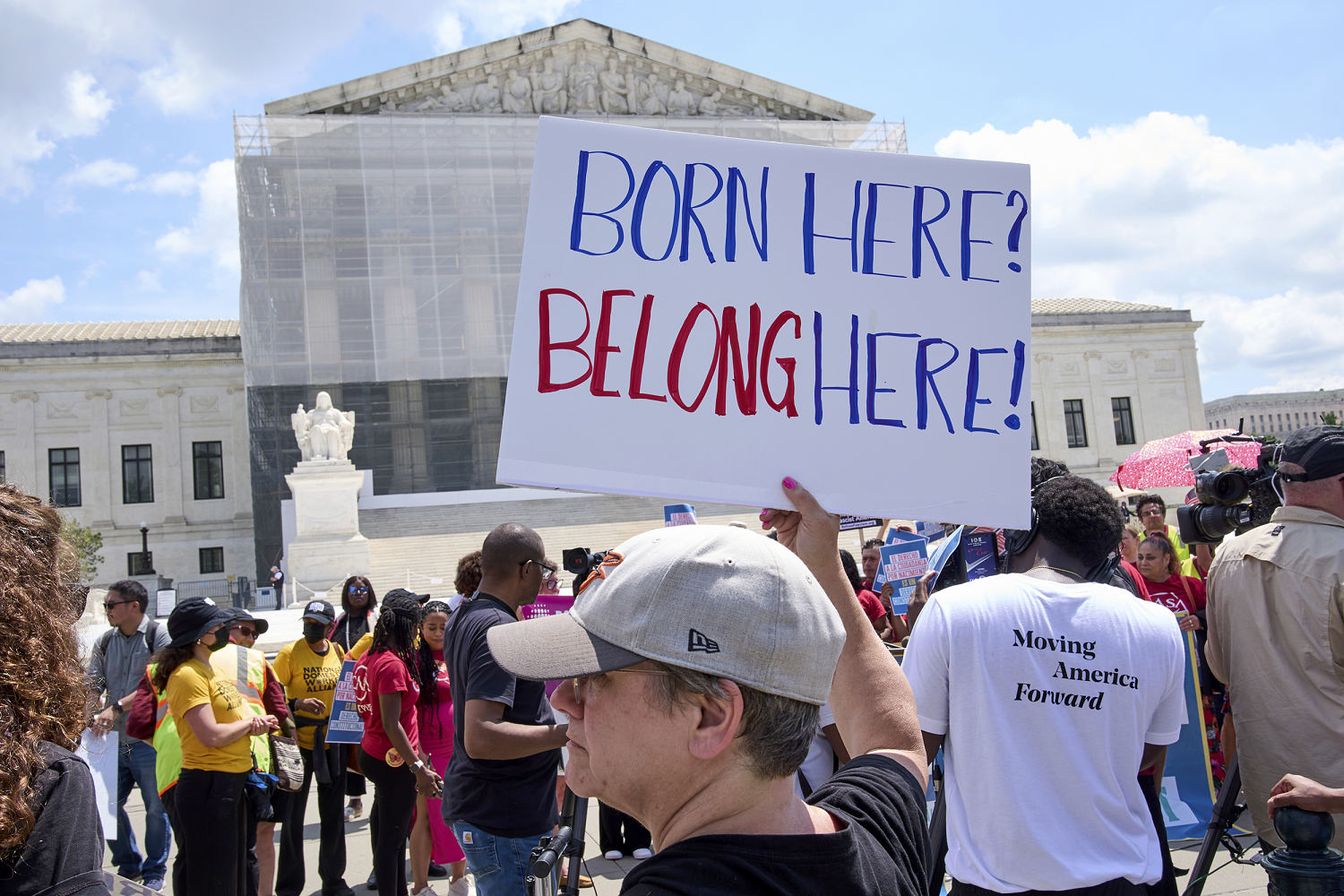
If you arose Friday morning thinking the U.S. Supreme Court would finally settle the question of birthright citizenship, you were disappointed. We know no more now than we did Thursday about how Chief Justice John Roberts’ court regards children born here: The liberal three-justice minority is certain all are citizens, while the conservative six-person majority remained mum. That conservative majority avoided addressing the constitutionality of President Donald Trump’s executive order restricting birthright citizenship and chose instead to reject so-called “universal injunctions” blocking his executive order.
All we learned Friday is that a final resolution to the question of birthright citizenship is somewhere in the distance.
All we learned Friday is that a final resolution to the question of birthright citizenship is somewhere in the distance, beyond many more rounds of court proceedings.
For families directly targeted by Trump’s Jan. 20 executive orderwhich aims to bar children born to nonpermanent residents from automatic citizenship, too little has changed. Such families — and especially their yet-to-be born children — remain in the crosshairs of a dispute that will continue unresolved at least for months to come. Going forward, such families will be subjected to harrowing circumstances, not knowing where they stand before the court and the Constitution.
By some accounts, we are five months into this era of uncertainty regarding citizenship. But we have endured years, decades, even centuries of confusion about citizenship.
We know that Trump intended to do away with birthright citizenship seven years ago, even though details were lacking. Consult the Congressional Record, and you’ll discover that the language in Trump’s executive order is similar to the language of bills that have been put forward every session since at least 2003. Scour law review articles and you’ll learn that as far back as the 1980s, some legal scholars have promoted the view that children of noncitizens born in the U.S. cannot be birthright citizens.
This longer view of the dispute over birthright citizenship helps explain why we, in this moment, feel so worn down by the evasion that is Friday’s Supreme Court decision. How long should Americans, especially children born in this country and their families, be expected to endure such indecision, confusion and uncertainty?
Perhaps we should not be surprised to find Roberts’ 21st century court fumbling the birthright citizenship question. Indeed, the origins of birthright citizenship in the United States are in the ignoble ineptitude of lawmakers two centuries ago. In early America, free Black Americans, nonimmigrants, were a despised group, and they were regularly confronted by those who argued that they were not citizens and thus had no rights before the courts or the Constitution.
It was a harrowing existence. In the nation’s early years, the American Colonization Society organized to press free Black Americans to leave the country, to places such as the West African colony of Liberia. The ACS outfitted ships, funded travel and encouraged Black Americans to self-deport, all to preserve the U.S. as a white man’s country. State lawmakers and local officials played their part, enacting so-called Black laws that constrained everyday life — where they worked and worshipped, how they traveled and raised their children — all to further encourage free Black Americans to leave.
Were free Black Americans citizens? They believed so and looked to the terms of the Declaration of Independence and the Constitution for authority. All men were created equal, they insisted. The Constitution recognized birthright citizenship and drew no color line, they urged. Today, we can read their ideas in early American newspapers, pamphlets and books. They are to be credited with promoting the terms of their own belonging, and those of all persons born in the United States. Their rallying cry: Citizenship in the U.S. was the result of birth, no more and no less.
Early American lawmakers failed Black Americans, leaving them to make families, lives and communities in the face of profound uncertainty.
Early American lawmakers failed Black Americans, leaving them to make families, lives and communities in the face of profound uncertainty. For example, in 1821, when Congress considered admitting Missouri into the Union, lawmakers asked whether Black Americans would have the right to enter the new state. Only if they were citizens, it was said, and a debate ensued with representatives taking both sides. The result was a twisted injustice: Congress never firmly answer the question and instead admitted Missouri while leaving Black Americans mired in ambiguity.
Also in 1821, U.S. Attorney General William Wirt was asked to resolve whether a free Black man could command a ship in Virginia’s coastal waters. The law provided that he could only if he were a citizen. Thus, Wirt was charged with solving the riddle of Black citizenship. But he did not. Instead, he reached a twisted conclusion: In Virginia, a free Black man could not be a citizen, but in another state he perhaps could. Once again, Black Americans were left to make lives under murky circumstances.
Notoriously, in the 1857 Dred Scott casethe U.S. Supreme Court concluded that no Black American could be a citizen. Or at least this is how the story is often told. A closer look reveals that the nation’s high court was deeply divided in that instance. Justice Roger Taney was sure that Black Americans were not birthright citizens. Still, his fellow jurists, Associate Justices Benjamin Curtis and John McLean, took the opposite view. Birthright, they concluded, was the law of the land and, absent a color bar in the Constitution, Black Americans, like their white counterparts, were citizens. The high court failed to settle much at all. Black Americans might be citizens to some, but to others they were subject to Black laws and colonization.
It would take a Civil War and a remaking of the Constitution during Reconstruction to settle debates over Black citizenship. The 14th Amendment constitutionalized the birthright principle that Black Americans had long championed. Along the way, Black Americans learned hard lessons, and so should we. The nation’s founding documents can be subjected to interpretation and reinterpretation in the hands of lawmakers, courts and the executive branch. Those designated as despised can be variously regarded as citizens and noncitizens, while lawmakers fumble and fail to settle the debate.
Those designated as despised can be variously regarded as citizens and noncitizens, while lawmakers fumble and fail to settle the debate
Most of all, by recalling the struggles of Black Americans for birthright citizenship, we better understand that uncertainty before the law is its own form of inhumanity. Being the object of debate is its own sort of harrowing existence. In early America, Black Americans made homes, raised children, established businesses and built a political culture — all the while facing down efforts to banish, exile or otherwise remove them from the nation. We rightly admire their courage and persistence. At the same time, we can recognize the price they paid for being subject to the deliberations of lawmakers who avoided, sidestepped, punted and otherwise refused to settle their status as birthright citizens.
Friday, the nation’s high court fumbled. Rather than affirm the birthright principleit put that question off for another day. In the months ahead, there will be briefs filed and arguments presented. At the same time, there will also be harrowing days ahead for immigrant Americans and their children, people who urgently await a determination of their standing as birthright citizens before the Constitution.
As a nation, we owe them at least that.
Martha S. Jones
Martha S. Jones is the Society of Black Alumni President Professor and Professor of History at The Johns Hopkins University. She is author of the prize-winning “Birthright Citizens: A History of Race and Race in Antebellum American” (2018, Cambridge University Press.) She is also the author of an amici cruise brief on the subject of birthright citizenship along with historian Kate Masur.
The Dictatorship
What this congressman’s shockingly racist post says about bigotry in Trump 2.0

If there is a defining characteristic of President Donald Trump’s second term — aside from shameless self-enrichment out of the executive branch — I’d argue it’s the proliferation of unabashed and outspoken racism espoused by the president and many of his most loyal followers.
The online attacks launched by Rep. Andy Ogles, R-Tenn., against New York City mayoral candidate Zohran Mamdani demonstrated this in stark relief, such as here:
As did many of the other GOP responses to Mamdani’s Democratic primary victory this week, which my BLN colleague Steve Benen highlighted for MaddowBlog. This reactionary post from Charlie Kirk, which reads like Ku Klux Klan propaganda, is a prime example:
During a recent conversation with MSNBC’s Chris Hayesauthor Ta-Nehisi Coates said that one of the Civil Rights Movement’s greatest successes has fallen apart in the Trump era: People no longer feel ashamed to express “open bigotry.” Coates added that one of Trump’s most successful political instincts has been his bet that conservative voters are broadly more comfortable with the racist rhetoric that previous Republicans have flirted with a bit more obliquely.
Indeed, this administration has spent its opening months seemingly grooming the MAGA movement to be OK with blatant racism — or, at minimum, accept it as a natural part of political discourse. Even when compared with Trump’s first administration, which promoted diversity programs and parted ways with a speechwriter after it was revealed he spoke at a conference attended by white nationalists, Trump 2.0 has been far more permissive of unabashed bigotry.
Indeed, this administration has spent its opening months seemingly grooming the MAGA movement to be OK with blatant racism.
Trump welcomed the aforementioned speechwriter, Darren Beattie, into his second administration despite the fact that he wrote last year that “competent white men must be in charge if you want things to work.” Trump’s administration rehired after initially firing a Department of Government Efficiency staffer who had called for the normalization of Indian hate. And a host of other figures in the administration have a history of promoting various other blatantly bigoted ideas.
Trump himself has peddled false claimsspread broadly by white nationalists, that white people are facing systemic oppression in South Africa, and he has targeted an exhibit at the Smithsonian American Art Museum that discredits racist pseudoscience. Trump’s Department of Homeland Security itself has spread propaganda promoted by overtly racist social media accountsand his White House has frequently relied on cruel memes meant to dehumanize and mock nonwhite immigrants.
To be clear, MAGA racism is not a new phenomenon. But the president certainly seems to have given his followers a green light to embrace and express any racist hate they may be feeling. And all of this has the feel of a far-right psyop — as if the administration is attempting to train Americans’ gag reflexes in such a way that grotesque exhibitions of bigotry that may have made them squeamish in the past no longer do so.
-

 The Josh Fourrier Show8 months ago
The Josh Fourrier Show8 months agoDOOMSDAY: Trump won, now what?
-
Uncategorized8 months ago
Bob Good to step down as Freedom Caucus chair this week
-
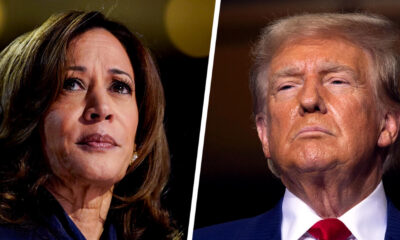
 Politics8 months ago
Politics8 months agoWhat 7 political experts will be watching at Tuesday’s debate
-

 Politics8 months ago
Politics8 months agoHow Republicans could foil Harris’ Supreme Court plans if she’s elected
-
Economy8 months ago
Fed moves to protect weakening job market with bold rate cut
-
Economy8 months ago
It’s still the economy: What TV ads tell us about each campaign’s closing message
-
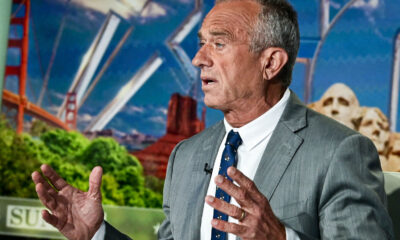
 Politics8 months ago
Politics8 months agoRFK Jr.’s bid to take himself off swing state ballots may scramble mail-in voting
-
Uncategorized8 months ago
Johnson plans to bring House GOP short-term spending measure to House floor Wednesday



